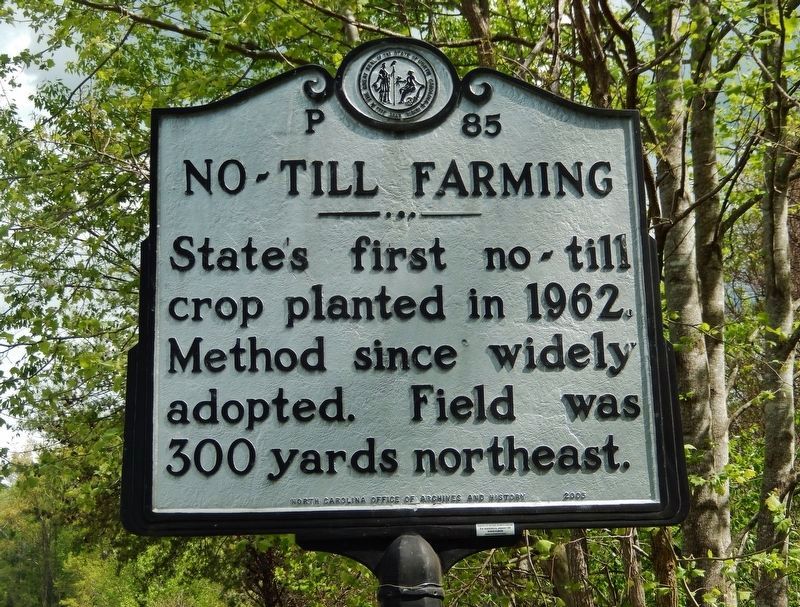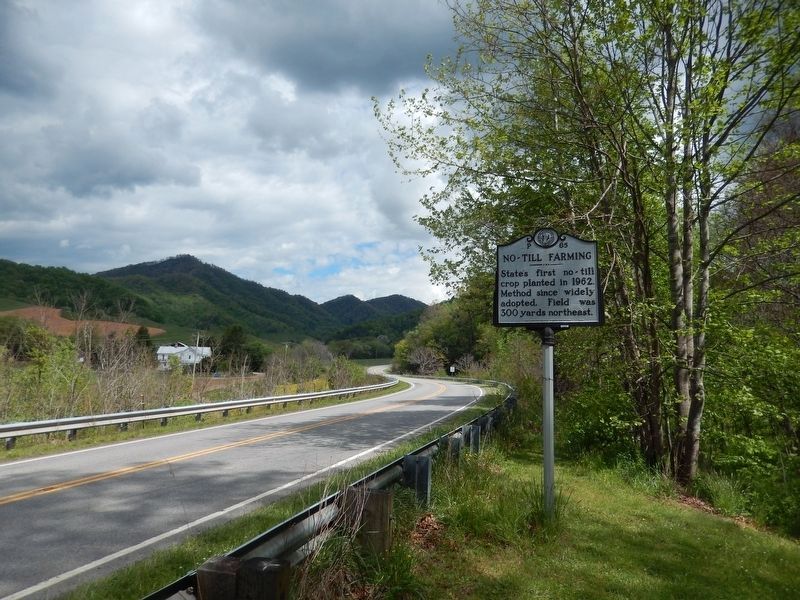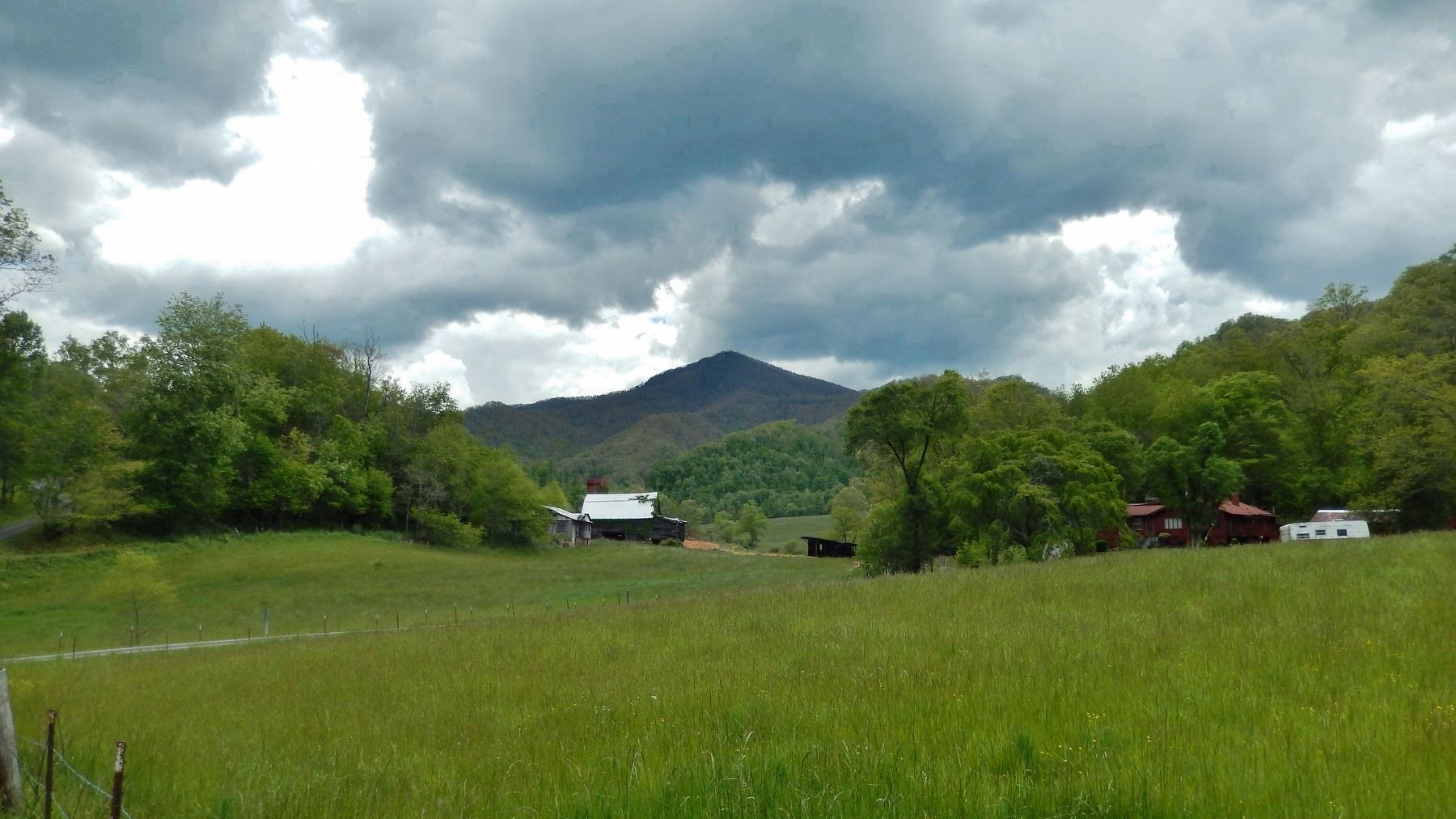Near Crabtree in Haywood County, North Carolina — The American South (South Atlantic)
No-till Farming
Erected 2005 by North Carolina Office of Archives and History. (Marker Number P-85.)
Topics and series. This historical marker is listed in this topic list: Agriculture. In addition, it is included in the North Carolina Division of Archives and History series list. A significant historical year for this entry is 1962.
Location. 35° 36.873′ N, 82° 56.06′ W. Marker is near Crabtree, North Carolina, in Haywood County. Marker is at the intersection of Rush Fork Road (State Highway 209) and Mulbrook Lane, on the right when traveling north on Rush Fork Road. Touch for map. Marker is in this post office area: Clyde NC 28721, United States of America. Touch for directions.
Other nearby markers. At least 8 other markers are within 7 miles of this marker, measured as the crow flies. Mount Zion United Methodist Church (approx. 1.8 miles away); "Cataloochee Trail" (approx. 4.2 miles away); Clyde High School (approx. 5.7 miles away); The Armed Forces from Clyde Town-ship (approx. 5.8 miles away); The Shook House (approx. 5.8 miles away); Lambuth Inn (approx. 6.2 miles away); Bishop Francis Asbury (approx. 6.2 miles away); Honorable Chief Junaluska (approx. 6.2 miles away).
Also see . . .
1. No-till Farming. Harry Young, a Kentucky farmer, is generally credited with planting the first modern-era no-till crop in the United States in 1962. John Kirkpatrick, a Haywood County dairy farmer, planted a no-till corn crop the same year. He planted his corn into old fescue sod, building and patenting a “machine that enabled him to plant corn in sod by disturbing only a few inches of soil.” (Submitted on May 14, 2021, by Cosmos Mariner of Cape Canaveral, Florida.)
2. No-till Farming (Wikipedia). No-till farming decreases the amount of soil erosion tillage causes. Other possible benefits include an increase in the amount of water that infiltrates into the soil, soil retention of organic matter, and nutrient cycling. No-till farming is widely used in the United States and the number of acres managed in this way continues to grow. (Submitted on May 14, 2021, by Cosmos Mariner of Cape Canaveral, Florida.)
Credits. This page was last revised on May 15, 2021. It was originally submitted on May 14, 2021, by Cosmos Mariner of Cape Canaveral, Florida. This page has been viewed 247 times since then and 36 times this year. Photos: 1, 2, 3. submitted on May 14, 2021, by Cosmos Mariner of Cape Canaveral, Florida.


